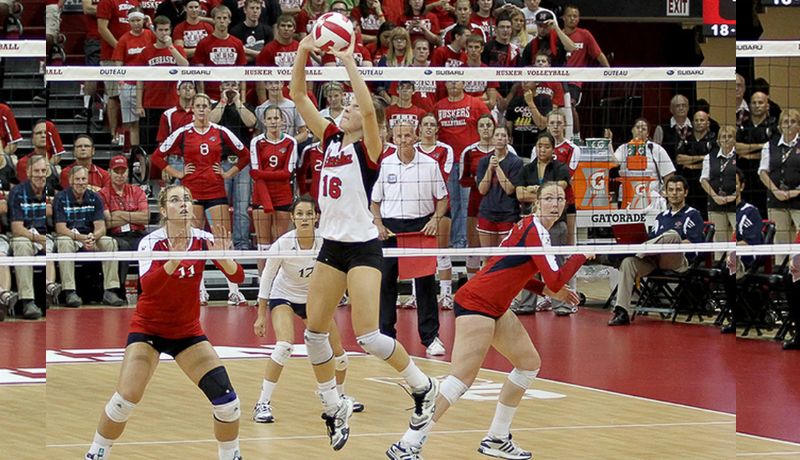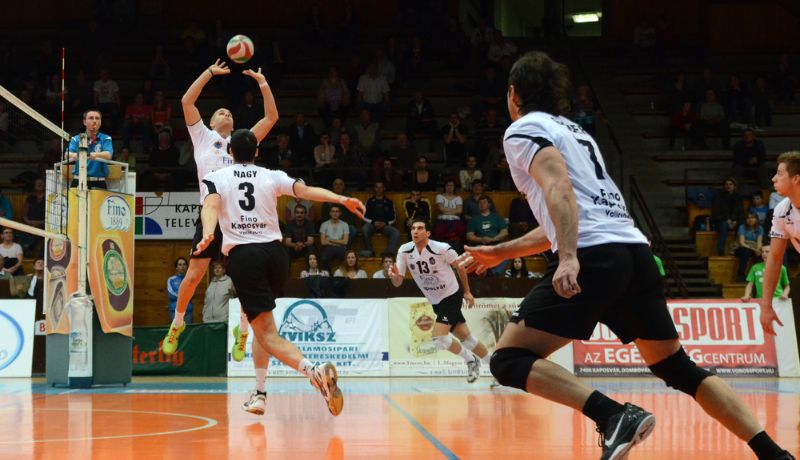What Is The Role Of Setter In Volleyball?
Volleyball, a fast-paced, energetic sport played by teams of six, has captivated audiences around the world for over a century. Each player on the court assumes a specialized position, working in harmony with their teammates to achieve the ultimate goal—scoring points by driving the ball over the net and onto the opposing side’s floor while keeping it from hitting their own.
Among these important roles, the setter’s position is particularly crucial. Serving as the linchpin of offensive strategy and team cohesion, a skilled setter can dictate the pace of the game, helping their team secure victories on the court.
The Setter Position: A Vital Cog in the Team Machine

The setter in volleyball is akin to the quarterback in football or the point guard in basketball. They are responsible for orchestrating the team’s offense by setting the ball for their team’s attackers. Precise ball control and excellent hand-eye coordination are the hallmarks of a proficient setter, whose main objective is to deceive the opposition and set the ball in such a way that it maximizes the chances for their hitters to score.
A setter needs to possess a unique set of skills and characteristics. These include quick decision-making abilities, heightened spatial awareness and a solid understanding of the game. They need to be able to read the game well to anticipate the opponent’s moves and adjust their setting strategies accordingly. Defensively, a setter is often tasked with digging out low balls and contributing to blocks. The blend of athleticism, precision, strategy and leadership makes the setter’s role both unique and vital within a volleyball team.
Setting Techniques: The Art of Deception and Variety
The art of setting in volleyball is as much about deception and variety as it is about precision and control. The objective is to mislead the opposition and give your hitters as much space and time as possible to attack the ball. A proficient setter utilizes a range of setting techniques to achieve these objectives.

- Back Set: This technique involves the setter pushing the ball behind their head to deceive the opposition. It creates an opportunity for the backside attacker to take a shot.
- Dump Shot: This deceptive move involves the setter appearing as if they’re about to set the ball for an attacker, but instead, they push the ball over the net to an unguarded area on the opponent’s court.
- Jump Set: This technique involves the setter jumping and setting the ball at the peak of their jump. When executed properly, it can confuse the opposition and create more attacking opportunities for the hitters.
- Quick Set: This is a low and fast pass that aims to catch the opposition off guard, giving the hitters a swift attack opportunity before the blockers can react.
- Shoot Set: This is a fast-paced, low trajectory set to the outside hitter. The speed of the set can throw off the timing of the opposing blockers, creating an advantageous situation for the attacker.
By mastering these techniques, a setter can add a dynamic and unpredictable element to the game, increasing their team’s chances of scoring points.
Communication and Leadership: The Heart of a Team’s Success
Coordination with Teammates
A successful setter works closely with their team:
- Establishing effective communication to maintain fluidity on the court.
- Building trust with fellow players, enhancing the team’s confidence in their abilities.
Leadership on the Court
On top of tactical prowess, setters often serve as leaders by:
- Directing plays and strategies, keeping the team focused and organized during matches.
- Motivating the team, fostering a positive atmosphere and boosting morale in high-pressure situations.
Challenges Faced by Setters: Navigating the Highs and Lows

Navigating the highs and lows as a setter in volleyball is no small feat. On top of the physical demands of the position, setters face a variety of challenges that require them to be mentally resilient and tactically sound.
Physical Strains
Setters are continuously on the move during a match, requiring high stamina levels and overall fitness. The repetitive nature of setting techniques can also lead to physical strains and injuries. Overuse injuries, such as “setter’s thumb,” which results from the continued impact of the ball against the thumb during setting, are common. The constant jumping can also put pressure on the ankles and knees, leading to potential injuries.
Decision-Making Pressure
As quarterbacks of the team, setters face immense pressure to make the right decisions under tight timelines. They need to quickly assess where to place the ball, consider the strengths of their hitters and anticipate the opponent’s defensive strategies all within seconds. A wrong decision can lead to missed scoring opportunities or even points for the opposition.
Mental Resilience
Setters often bear the brunt of responsibility when the team’s offense is not functioning efficiently. The blame for poor hits often falls on the setter, who must then deal with this criticism while maintaining focus on the game. This requires mental resilience, the ability to shrug off mistakes and the capacity to bounce back quickly.
Building and Maintaining Team Chemistry
A successful setter needs to have an excellent rapport with every team member, understanding their unique timing, preferences and hitting style. Any changes in the team, such as new players or injuries, pose a challenge to this well-established synergy. The setter needs to adapt quickly and integrate new members into the team’s offense efficiently.
By understanding and managing these challenges effectively, a setter can help drive their team to success, despite the inherent highs and lows of the position.
Notable Setters in Volleyball History: Legends of the Sport

Over the years, there have been many exceptional setters who have left their mark on the sport. Some notable names include:
- Karch Kiraly: A three-time Olympic gold medalist as a player and Olympic gold medalist as a coach, Kiraly is widely considered one of the greatest players in volleyball history.
- Fernando Hernández Ramos: A member of the Cuban “Golden Generation,” Hernández led his team to win three consecutive Olympic gold medals from 1992-2000.
- Lloyd Ball: An American setter, Ball is known for his exceptional blocking abilities and was named Best Setter at the 2008 Olympics where he won a gold medal.
- Maurício Lima: A Brazilian setter, Lima was named Best Setter at the 2004 Olympics where he led his team to win a gold medal.
These skilled setters have not only achieved success on the court but also served as inspirations for future generations of players and setters. Their contributions to the sport have solidified their place in volleyball history and continue to influence and shape the game today.
Conclusion:
The role of a setter in volleyball is multifaceted and intriguing, requiring not just physical prowess but also strategic thinking, leadership and strong communication skills. They are the quarterbacks of the team, directing plays, setting the ball and even acting as decoys to outsmart the opposition. Setters face physical and mental challenges, yet their resilience and adaptability continue to drive their teams to success.
As the sport evolves, setters will undoubtedly continue to play a crucial role in shaping and elevating the game of volleyball. So, aspiring players, take note – mastering the art of setting is key to becoming a formidable force on the court. Let these notable setters be your inspiration as you work towards honing your skills and leading your team to victory. Keep setting high and reaching for the stars!







